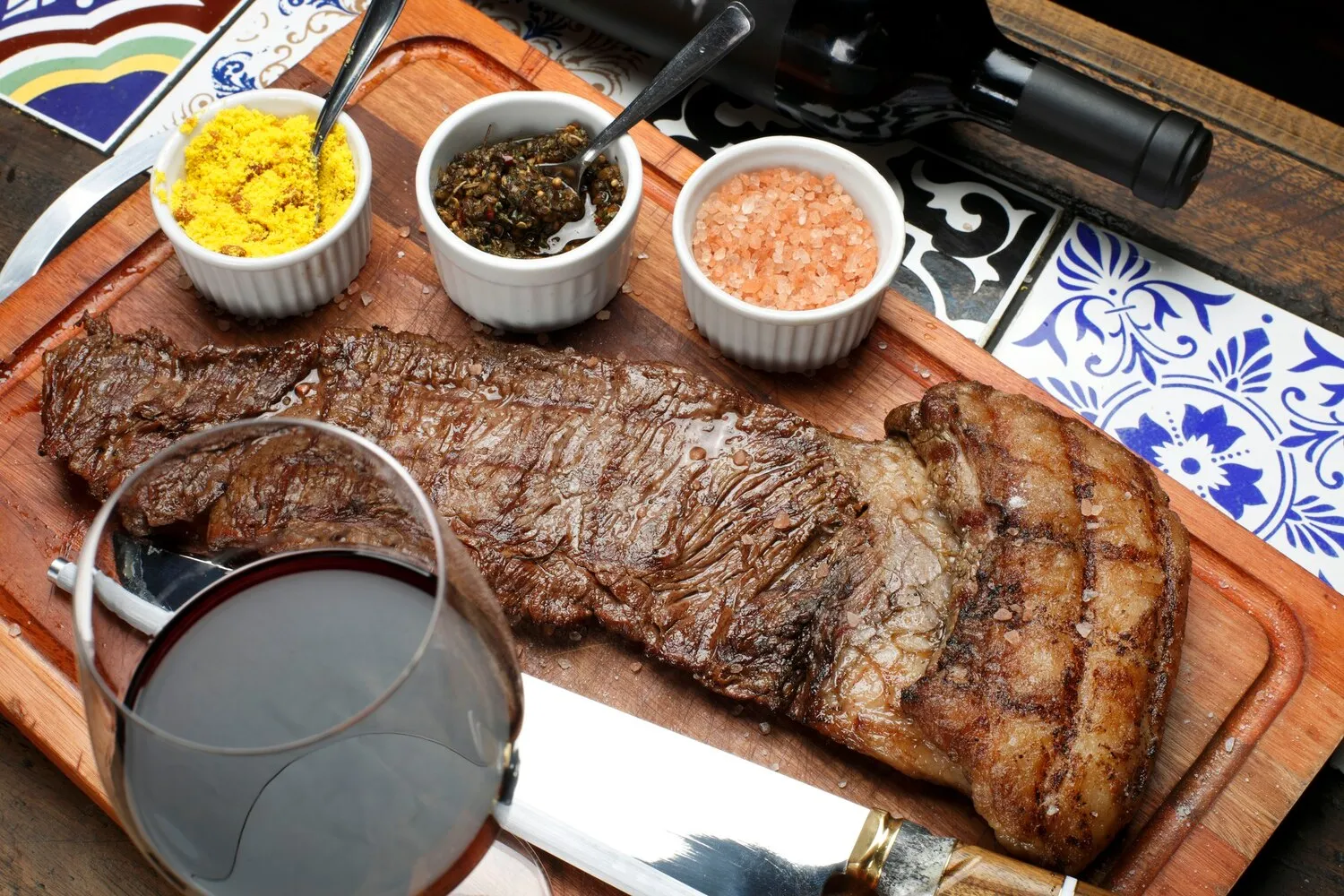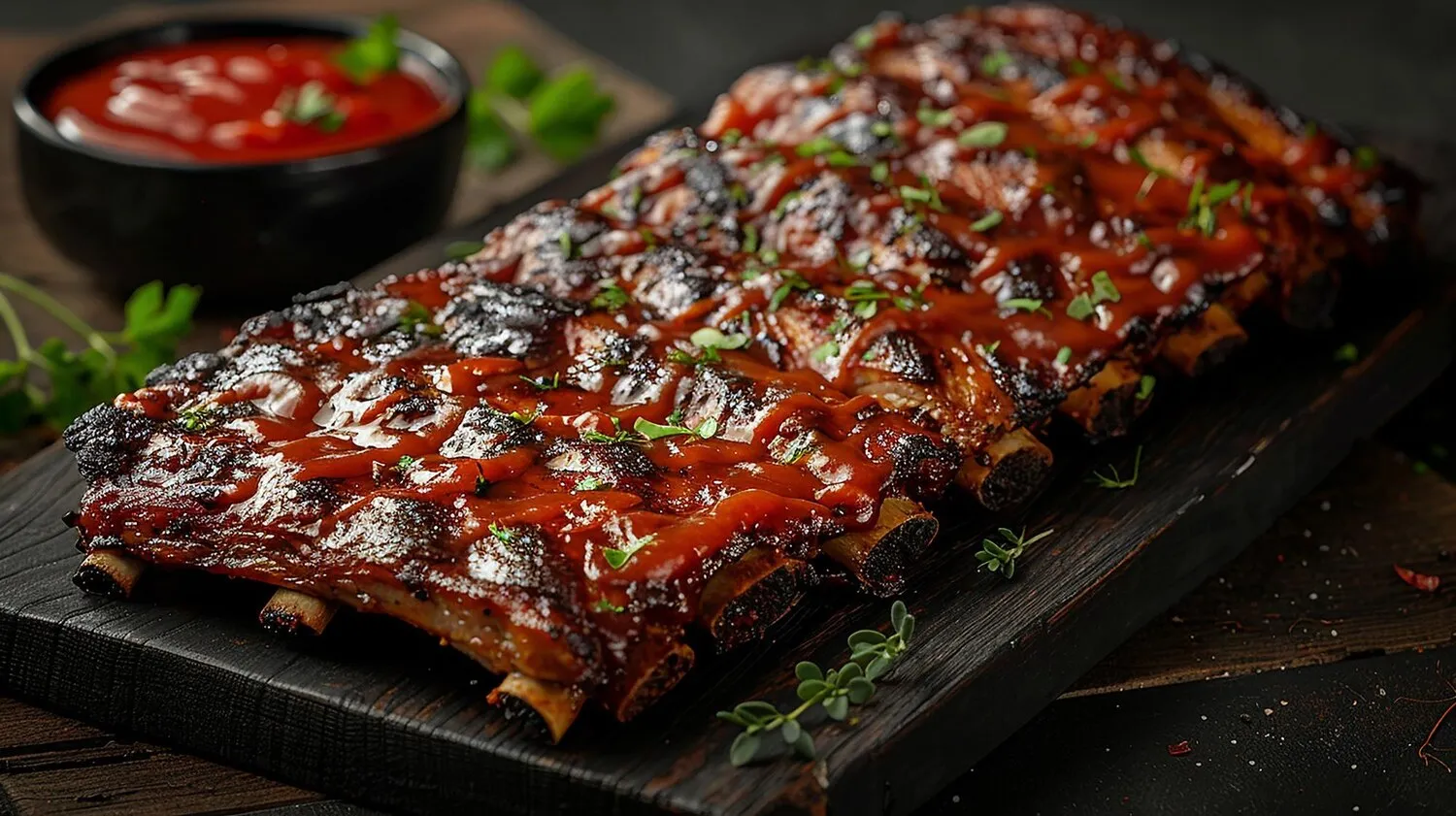
Asado Argentino
Traditional Argentinian barbecue, including a selection of grilled meats.
Nutrition Facts
* The % Daily Value (DV) tells you how much a nutrient in a serving of food contributes to a daily diet. 2,000 calories a day is used for general nutrition advice.
La Estancia
The asado tradition in Argentina evolved from the gauchos, nomadic horsemen who roamed the pampas (grasslands) in the 18th and 19th centuries. Lacking refrigeration, gauchos would slaughter cattle and roast the meat over open fires. This simple method of cooking became a cornerstone of Argentine cuisine and culture, influenced by indigenous practices and the abundance of cattle introduced by Spanish colonization.
Asado is more than just a meal in Argentina; it's a social event, a ritual, and a symbol of national identity. It represents family, friendship, and celebration.
Social Gathering
Asados are typically large gatherings of family and friends, often lasting for hours. The act of grilling and sharing food is a central part of Argentine social life.
Ritual and Tradition
There's a specific order and technique to preparing an asado, passed down through generations. The 'asador' (grill master) is highly respected and takes great pride in their skill.
National Identity
Asado is deeply ingrained in Argentine culture and is considered a national dish. It represents the country's gaucho heritage and its reputation for high-quality beef.
Celebrating Special Occasions
Birthdays, holidays, and other special occasions are often celebrated with an asado. It's a way to bring people together and enjoy a communal meal.
Asado Argentino is defined by its smoky, savory, and rich meaty flavors. The simplicity of the preparation highlights the natural taste of the high-quality beef.
The predominant flavor is that of expertly grilled, often grass-fed, beef, enhanced by the smoky notes from the wood or charcoal fire. Salt is the primary seasoning, allowing the inherent flavor of the meat to shine. Different cuts offer varying textures and degrees of richness, from the tender ribeye (ojo de bife) to the flavorful short ribs (asado de tira). Sausages (chorizo and morcilla) add spicy and savory notes, while sweetbreads (mollejas) offer a creamy, delicate counterpoint. Chimichurri sauce, a parsley-based condiment, provides a fresh, herbaceous, and slightly acidic element that cuts through the richness of the meat.
Quality of Meat
The quality of the meat is paramount. Look for grass-fed beef from reputable sources. The marbling (intramuscular fat) is a key indicator of flavor and tenderness.
Proper Grilling Technique
Use hardwood charcoal or wood for an authentic smoky flavor. Maintain a consistent heat, and avoid flare-ups. Cook the meat slowly to allow the flavors to develop and the fat to render.
Salting the Meat
Salt the meat generously, preferably with coarse salt, before grilling. This helps to season the meat and create a flavorful crust.
Chimichurri Sauce
Don't forget the chimichurri sauce! A good chimichurri will elevate the entire asado experience. Experiment with different variations to find your favorite.
Patience is Key
An asado is a marathon, not a sprint. Allow plenty of time for cooking and enjoying the company. Rushing the process will compromise the quality of the meal.
Explore additional Meat dishes and restaurants
Explore MeatDiscover top dining spots and culinary experiences in Província d'Alacant.
Explore Província d'AlacantLearn more about the food culture, restaurant scene, and culinary heritage of Spain.
Explore Spain
